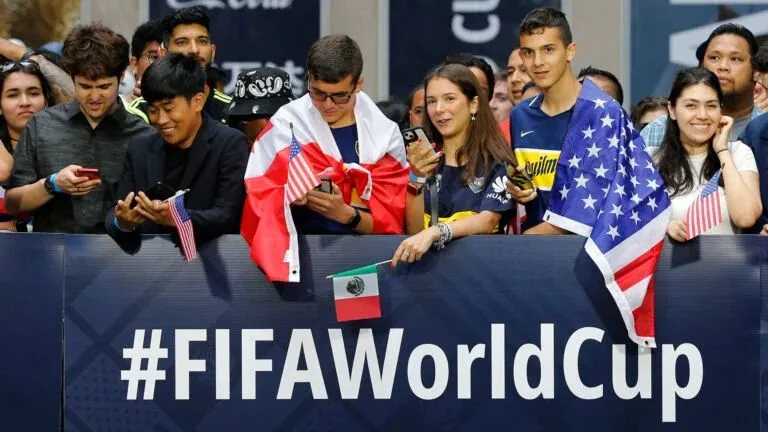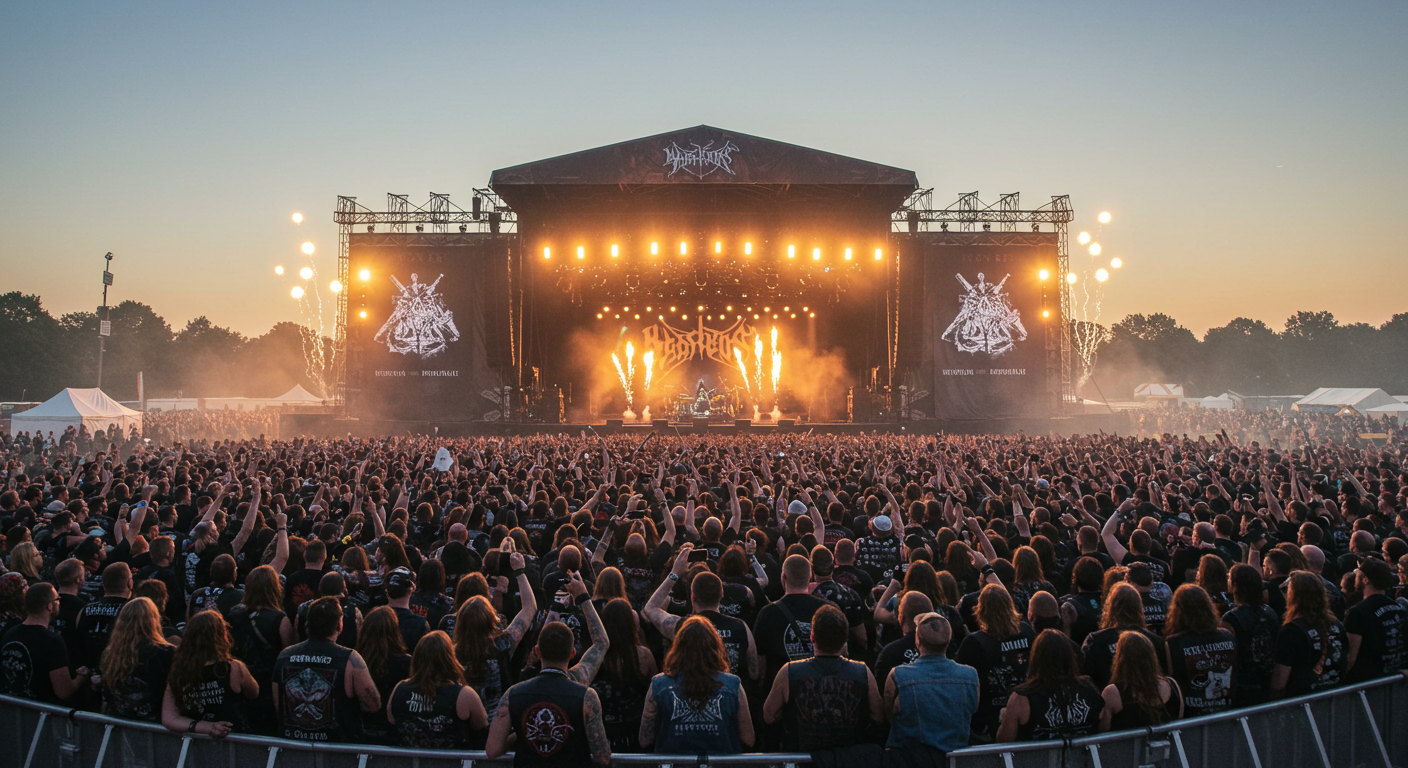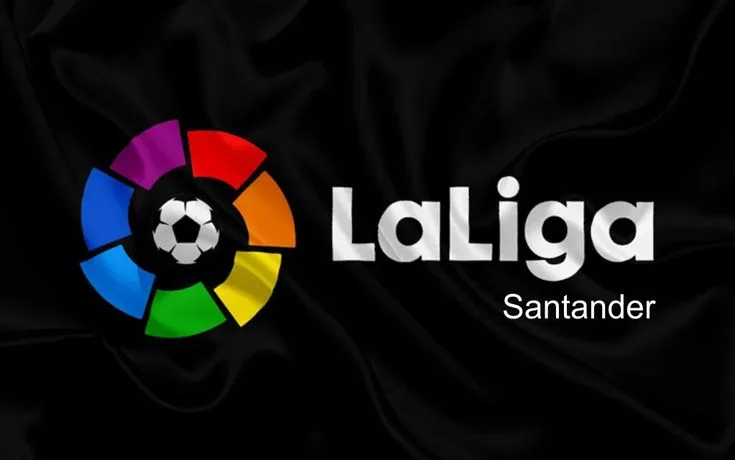The Battle of Football Titans
Which league is better La Liga or Serie A Football, or soccer as some call it, connects fans worldwide through passion, drama, and incredible skill displays. Among the elite football competitions, two leagues consistently stand out for their rich history, tactical diversity, and world-class talent: Spain’s La Liga and Italy’s Serie A. These prestigious championships have produced countless FIFA World Cup stars and legendary club teams that have dominated European football for decades.
But which league truly deserves the crown as Europe’s best? Is it the technical brilliance and attacking flair of La Liga, home to Barcelona and Real Madrid? Or does Serie A‘s tactical sophistication and defensive mastery, showcased by teams like Juventus and AC Milan, make it superior?
Today, we’ll dive deep into this fascinating debate that divides football enthusiasts around the globe. We’ll compare these two footballing powerhouses across multiple dimensions – from playing styles and tactical approaches to financial strength and global influence. Whether you’re a die-hard fan of Spanish football, an Italian calcio aficionado, or simply a football lover seeking clarity on this age-old question, this comprehensive analysis will provide you with everything you need to form your own informed opinion.
Let’s kick off our extraordinary journey through the remarkable landscapes of La Liga and Serie A, examining what makes each league unique and determining which one ultimately has the edge in today’s rapidly evolving football world.
Historical Legacy: Tracing the Roots of Excellence
The Birth and Evolution of La Liga
La Liga, officially known as La Liga Santander for sponsorship reasons, was founded in 1929. The league quickly established itself as a prominent football competition in Europe, with clubs like Real Madrid and Barcelona emerging as powerhouses. The remarkable growth of Spanish football coincided with the country’s success in international tournaments, including multiple FIFA World Cup and European Championship victories.
Real Madrid’s dominance in the early European Cup (now Champions League) competitions during the 1950s and 1960s helped cement La Liga‘s reputation globally. The arrival of legendary players like Alfredo Di Stéfano, Ferenc Puskás, and later Johan Cruyff elevated the league’s profile significantly.
Serie A: The Golden Age of Italian Football
Serie A, Italy’s premier football division, was established in 1898, making it one of the oldest professional football leagues in the world. The league reached its pinnacle during the 1980s and 1990s, often referred to as the “Golden Age” of Italian football. During this period, Serie A was undisputedly the strongest league in the world, attracting the finest talents from across the globe.
Italian clubs dominated European competitions, with AC Milan, Juventus, and Inter Milan winning multiple European Cups/Champions League titles. The success of the Italian national team, winning four FIFA World Cup titles (1934, 1938, 1982, and 2006), further enhanced the league’s prestige.
Trophy Cabinet Comparison
When comparing the historical success of clubs from both leagues in European competitions:
- La Liga clubs have won the Champions League/European Cup a staggering 19 times (Real Madrid 14, Barcelona 5)
- Serie A clubs have claimed the prestigious trophy 12 times (AC Milan 7, Inter Milan 3, Juventus 2)
This impressive Champions League haul for La Liga gives it a slight edge in terms of historical European success, though Serie A‘s broader distribution of winners demonstrates its historical depth.
Playing Styles: Tactical Identity and Football Philosophy
La Liga’s Technical Brilliance
La Liga is renowned worldwide for its emphasis on technical excellence and possession-based football. The league’s philosophy prioritizes skill, creativity, and attacking football over physical attributes. Barcelona’s revolutionary “tiki-taka” style under Pep Guardiola epitomized this approach, influencing teams throughout Spain and beyond.
Spanish teams typically emphasize:
- Intricate passing patterns
- High possession percentages
- Technical individual skills
- Positional fluidity
- Building from the back
This distinctive philosophy has helped Spanish teams and players achieve remarkable success in both club competitions and international tournaments, including Spain’s historic FIFA World Cup triumph in 2010.
Serie A’s Tactical Sophistication
In contrast, Serie A has historically been characterized by its tactical sophistication and defensive excellence. The Italian approach to football, often referred to as “catenaccio” (meaning “door-bolt” in Italian), emphasizes defensive organization, positional discipline, and tactical awareness.
Italian football traditionally values:
- Defensive solidity
- Tactical discipline
- Strategic game management
- Counter-attacking precision
- Set-piece proficiency
While sometimes criticized for being overly defensive, Serie A‘s tactical approach has evolved significantly in recent years. Modern Italian football incorporates more attacking elements while maintaining its traditional defensive strengths.
The Evolution of Playing Styles
In the last decade, both leagues have experienced a tactical evolution:
La Liga has seen more tactical diversity beyond the once-dominant possession model, with teams like Atlético Madrid finding success with more defensively compact approaches.
Serie A has embraced more progressive football, with coaches like Maurizio Sarri, Gian Piero Gasperini, and Antonio Conte introducing more attacking philosophies while maintaining Italian tactical intelligence.
This convergence of styles has made both leagues more complete and entertaining than ever before, blurring some of the traditional distinctions between them.
Star Power: The Magnetism of Football Icons
La Liga’s Galácticos and Superstars
For much of the 21st century, La Liga has been the undisputed home of football’s biggest individual stars. The era defined by the Cristiano Ronaldo-Lionel Messi rivalry (2009-2018) represents perhaps the greatest concentration of individual talent in football history. This period saw La Liga boast an incredible array of Ballon d’Or winners, with the award going to players from the Spanish league for 11 consecutive years (2009-2019).
Beyond the legendary duo, La Liga has attracted and developed countless superstars including:
- Neymar Jr.
- Luis Suárez
- Zinedine Zidane
- Ronaldinho
- Sergio Ramos
- Andrés Iniesta
- Xavi Hernández
Many of these stars went on to shine on the biggest international stage, the FIFA World Cup, further cementing La Liga‘s reputation for housing the game’s elite talent.
Serie A’s Legendary Icons
While Serie A may have lost some of its star-drawing power in the 21st century, the league’s history is studded with some of football’s greatest legends. During its golden era in the 1980s and 1990s, Serie A was unquestionably the most glamorous league in world football, featuring icons such as:
- Diego Maradona
- Roberto Baggio
- Paolo Maldini
- Ronaldo (the Brazilian phenomenon)
- Zinedine Zidane
- Michel Platini
- Franco Baresi
- Alessandro Del Piero
In recent years, Serie A has begun attracting major stars again, with players like Cristiano Ronaldo (2018-2021), Romelu Lukaku, and Zlatan Ibrahimović choosing Italy as their destination. The league’s ability to develop young talent into world-class players remains impressive, with stars like Paulo Dybala and Lautaro Martínez carrying the torch forward.
Current Star Distribution
Today, La Liga still boasts impressive talent with players like Vinícius Júnior, Robert Lewandowski, and João Félix lighting up the league. However, with Messi and Ronaldo’s departures, the superstar concentration has become more evenly distributed across Europe’s top leagues.
Serie A continues its renaissance with a compelling mix of established stars and rising talents including Rafael Leão, Khvicha Kvaratskhelia, and Victor Osimhen, alongside seasoned veterans like Lautaro Martínez.
Financial Health: Economic Influence and Sustainability
La Liga’s Economic Model
La Liga has traditionally featured significant financial disparity between its top clubs (Real Madrid and Barcelona) and the rest of the league. For years, these giants benefited from individually negotiated television deals, creating an economic imbalance that allowed them to dominate financially.
However, important reforms in Spanish football’s television rights distribution implemented in 2015 have created a more balanced economic landscape. The league’s international expansion strategy has paid dividends, with La Liga establishing a strong presence in key markets like North America and Asia.
According to Deloitte’s Football Money League 2023:
- Real Madrid and Barcelona consistently rank among the top 5 highest-earning clubs in world football
- Atlético Madrid has also established itself as a financial power
- Mid-tier clubs like Sevilla, Valencia, and Villarreal have developed sustainable business models
Serie A’s Financial Challenges and Recovery
Serie A experienced significant financial difficulties in the early 2000s, losing ground to the Premier League, La Liga, and Bundesliga. Issues including aging stadiums, lower television revenues, and limited commercial growth led to a period where Italian clubs struggled to compete financially with Europe’s elite.
Recent years have shown promising signs of recovery:
- More clubs investing in stadium ownership and modernization
- Improved television deals, particularly internationally
- Investment from foreign owners bringing fresh capital
- A renewed focus on sustainable financial management
Despite these improvements, Serie A still faces challenges. According to financial analysts at Football Benchmark, the league’s overall revenues remain behind the Premier League and La Liga, though the gap is narrowing.
Financial Sustainability and Future Outlook
In terms of financial sustainability:
La Liga has implemented some of Europe’s strictest financial controls through its “Economic Control” regulations, which have helped Spanish clubs maintain healthier finances. This approach has protected the league from the worst impacts of the COVID-19 pandemic, though Barcelona’s well-documented financial troubles show that challenges remain.
Serie A continues to work on financial improvements, with a greater emphasis on developing young talent to sell at a profit and smarter transfer market operations. The league’s recovery plan includes improved stadium infrastructure and expanded international marketing efforts.
Currently, La Liga holds the edge in financial strength and stability, though Serie A‘s recovery trajectory looks promising for the future.
Global Appeal: International Reach and Fan Engagement
La Liga’s Worldwide Expansion
La Liga has executed one of football’s most aggressive international expansion strategies over the past decade. Under the leadership of Javier Tebas, the league has opened offices in key markets globally and prioritized expanding its international fanbase.
Key elements of La Liga‘s global strategy include:
- Match scheduling optimized for Asian and American viewers
- Pre-season tours featuring top clubs in emerging markets
- Digital content creation in multiple languages
- International youth development programs
- Strategic partnerships with leagues worldwide
According to research by Nielsen Sports, La Liga now boasts over 2.8 billion fans globally, with particularly strong followings in Latin America, the Middle East, and increasingly in North America.
Serie A’s International Renaissance
While Serie A dominated global football interest during its golden era, its international appeal declined in the early 2000s. However, the league has made significant strides in rebuilding its global brand in recent years.
Serie A‘s international strategy focuses on:
- Leveraging Italy’s cultural appeal and lifestyle associations
- Highlighting the league’s tactical sophistication
- Expanding digital content in key languages
- Hosting the Supercoppa Italiana in international markets like Saudi Arabia
- Developing stronger broadcast partnerships globally
The arrival of global superstars like Cristiano Ronaldo temporarily accelerated Serie A‘s international growth, particularly in markets like China and the United States. According to YouGov, Serie A‘s global appeal has increased by nearly 30% since 2018.
Social Media and Digital Engagement
In the digital realm:
La Liga has built impressive social media followings, with over 100 million followers across platforms. The league invests heavily in digital content creation, including innovative match coverage technologies and behind-the-scenes access.
Serie A has made significant improvements in its digital strategy, though it still trails La Liga in total social media engagement. The league has focused on highlighting the passionate atmosphere of Italian stadiums and the dramatic narratives that emerge throughout the season.
Competitive Balance: League Depth and Championship Race
La Liga’s Competitive Structure
La Liga has historically been dominated by Real Madrid and Barcelona, with the two giants claiming the majority of league titles. However, the competitive landscape has evolved significantly in recent years:
- Atlético Madrid has emerged as a genuine third power, winning league titles in 2014 and 2021
- Sevilla has established itself as a force in European competitions
- Clubs like Villarreal, Real Sociedad, and Athletic Bilbao have developed distinct identities and achieved significant successes
- The middle tier of the league has strengthened considerably
According to statistical analysis from FiveThirtyEight, La Liga‘s competitive balance has improved measurably over the past five seasons, with more teams capable of challenging for European places.
Serie A’s Evolving Competition
Serie A‘s competitive structure has undergone dramatic changes in recent years:
- Juventus’s nine-year dominance (2012-2020) gave way to more unpredictable title races
- Inter Milan, AC Milan, and Napoli have all claimed league titles since 2021
- Atalanta has risen from mid-table obscurity to become a Champions League regular
- Roma, Lazio, and Fiorentina have all experienced competitive resurgences
The increased competitive balance has made Serie A one of Europe’s most unpredictable and exciting leagues. Data from Opta Sports indicates that Serie A now has the closest average points gap between positions 1-6 among Europe’s top five leagues.
Mid-table and Lower-table Quality
Beyond the title contenders:
La Liga‘s mid-table teams are known for their technical proficiency and tactical organization. Clubs with limited resources often develop distinctive playing styles and produce talented young players. Spanish clubs consistently perform well in European competitions at all levels.
Serie A‘s mid-table teams traditionally emphasize defensive organization and tactical discipline. Recent years have seen more tactical diversity, with clubs like Sassuolo and Hellas Verona implementing more progressive approaches. Italian teams have shown improved performances in European competitions.
While both leagues have strengthened their competitive balance, Serie A currently shows greater unpredictability at the top end, while La Liga demonstrates more consistent quality throughout the table.
Youth Development: Building Football’s Future
La Liga’s Academy Excellence
La Liga has earned worldwide recognition for its exceptional youth development systems. Barcelona’s famous La Masia academy represents perhaps the world’s most celebrated youth development program, having produced legends like Lionel Messi, Xavi, and Andrés Iniesta.
Beyond Barcelona, other Spanish clubs have established impressive youth systems:
- Real Madrid’s La Fábrica has produced talents like Raúl, Iker Casillas, and more recently Dani Carvajal
- Athletic Bilbao’s unique Basque-only policy necessitates exceptional youth development
- Clubs like Villarreal, Real Sociedad, and Valencia consistently develop top young players
Spain’s success in youth tournaments, including multiple UEFA European Under-19 and Under-21 Championships, reflects the quality of La Liga‘s development infrastructure. The technical education Spanish youngsters receive creates players well-prepared for the modern game’s demands and often for success on the FIFA World Cup stage.
Serie A’s Development Tradition
Serie A possesses a proud tradition of youth development, though Italian clubs have sometimes been criticized for not giving young players sufficient first-team opportunities. However, the league has made significant strides in this area in recent years.
Notable Italian youth academies include:
- Atalanta’s renowned system that has produced dozens of Serie A players
- AC Milan’s historic youth setup that developed Franco Baresi and Paolo Maldini
- Inter Milan’s academy that has produced talents like Nicolo Barella
- Fiorentina’s commitment to developing young Italian talent
According to statistics from CIES Football Observatory, Serie A has increased playing time for under-21 players by over 40% in the past five seasons, reflecting a renewed emphasis on youth development.
Current Youth Integration
In terms of current youth integration:
La Liga continues to excel at incorporating young talent, with teenagers like Lamine Yamal, Gavi, and Endrick making significant impacts. Spanish clubs often give young players major responsibilities earlier than teams in other leagues.
Serie A has improved significantly in this area, with talents like Khvicha Kvaratskhelia, Alessandro Bastoni, and Sandro Tonali becoming cornerstone players for top Italian clubs. The financial pressures facing Italian football have encouraged greater youth integration.
Fan Experience: The Atmosphere of Football
La Liga’s Stadium Culture
La Liga offers diverse stadium experiences across Spain. The league features some of football’s most iconic venues, including:
- Santiago Bernabéu (Real Madrid) – Currently undergoing a €575 million renovation
- Camp Nou (Barcelona) – The largest stadium in Europe with over 99,000 capacity
- Wanda Metropolitano (Atlético Madrid) – A modern stadium known for its atmosphere
- San Mamés (Athletic Bilbao) – Called “La Catedral” for its passionate atmosphere
Spanish fan culture emphasizes the technical and tactical aspects of the game, with crowds responding enthusiastically to skillful play and creative moments. According to fan experience surveys by World Football Summit, La Liga delivers strong overall matchday experiences, particularly at the league’s biggest venues.
Serie A’s Passionate Support
Serie A is renowned for its passionate and vocal support, with several clubs boasting some of Europe’s most devoted ultras groups. Notable stadium experiences include:
- San Siro (shared by AC Milan and Inter Milan) – One of football’s most legendary venues
- Stadio Olimpico (shared by Roma and Lazio) – Known for its intense atmosphere
- Diego Armando Maradona Stadium (Napoli) – Featuring some of Italy’s most passionate fans
- Allianz Stadium (Juventus) – Italy’s most modern major stadium
Italian fan culture places strong emphasis on club identity and history, with elaborate choreographed displays (tifos) and sustained vocal support. The connection between clubs and their local communities often runs exceptionally deep.
Stadium Infrastructure Challenges and Improvements
Stadium infrastructure represents one area where both leagues face challenges compared to the Premier League and Bundesliga:
La Liga has seen significant stadium improvements in recent years, with clubs like Atlético Madrid, Athletic Bilbao, and Real Sociedad building or renovating venues. Real Madrid’s Santiago Bernabéu renovation will create one of the world’s most advanced stadiums.
Serie A has historically struggled with aging stadiums, many of which are municipality-owned rather than club-owned. However, progress is being made:
- Juventus pioneered private stadium ownership in Italy
- Atalanta has renovated its Gewiss Stadium
- Fiorentina, Roma, Milan, and Inter all have stadium projects in various stages of development
In terms of current matchday experience, both leagues offer unique and authentic football atmospheres, though Serie A holds a slight edge for raw passion and La Liga for overall stadium comfort and amenities.
European Performance: The Ultimate Measuring Stick
La Liga’s European Dominance
La Liga‘s performance in European competitions over the past two decades has been nothing short of extraordinary. Spanish clubs have dominated both the Champions League and Europa League during this period:
- Real Madrid has won multiple Champions League titles, including an unprecedented three consecutive victories (2016-2018)
- Barcelona’s golden era brought multiple European titles with a distinctive style
- Sevilla established itself as the undisputed kings of the Europa League with six titles
- Villarreal and Atlético Madrid have also claimed European trophies
Between 2013 and 2018, Spanish clubs won 9 out of 10 available European trophies (Champions League and Europa League combined), an unprecedented period of continental dominance.
Serie A’s European Revival
After dominating European competitions in the 1990s, Serie A experienced a decline in continental success during the 2000s and early 2010s. However, recent years have shown promising signs of a revival:
- Italian clubs have begun reaching the latter stages of European competitions more consistently
- Inter Milan reached the Champions League final in 2023
- Roma and Atalanta have made deep runs in European competitions
- The collective UEFA coefficient of Italian clubs has improved significantly
According to UEFA’s coefficient rankings, Serie A has overtaken the Bundesliga to reclaim its position as Europe’s third-strongest league based on European performance.
Tactical Adaptability in Europe
An interesting aspect of European performance is how clubs adapt their styles for continental competition:
La Liga clubs have demonstrated remarkable tactical flexibility in Europe, often adjusting their approaches based on specific opponents while maintaining their technical foundation. This adaptability has contributed significantly to Spanish clubs’ European success.
Serie A teams naturally bring their tactical sophistication to European competitions, with their defensive organization often proving effective against attacking opponents. Italian clubs’ traditional pragmatism translates well to two-legged knockout ties.
While Serie A‘s European fortunes are improving, La Liga‘s extraordinary record in continental competitions over the past two decades gives it a clear advantage in this category.
Current Trajectory: Where Are These Leagues Heading?
La Liga’s Evolving Landscape
La Liga finds itself at an interesting juncture after the departures of generational stars like Messi and Ronaldo. The league is navigating several key developments:
- Financial regulations forcing more sustainable operations
- Greater emphasis on developing and featuring young talent
- More competitive balance beyond the traditional powerhouses
- Continued international expansion, particularly in North America
- Technological innovation in broadcasting and fan engagement
According to industry experts at SportBusiness, La Liga‘s strategic focus on long-term financial sustainability and global growth positions it well for the future, despite the short-term challenge of losing some star power.
Serie A’s Renaissance Period
Serie A is experiencing what many observers consider a renaissance period, with several positive trends emerging:
- Increased competitive balance at the top of the table
- More diverse tactical approaches and more attacking football
- Growing international interest and broadcast revenues
- Greater integration of young talent
- Improved financial management at many clubs
The league’s leadership has outlined ambitious plans to restore Serie A to its former glories, with a particular focus on stadium development and international marketing. According to Football Italia, the league aims to increase its global revenue by 30% by 2025.
Future Outlook Comparison
Looking ahead:
La Liga faces the challenge of maintaining its global appeal without some of the transcendent stars that defined its recent golden era. However, the league’s strong fundamentals, including financial stability, youth development, and international strategy, provide a solid foundation.
Serie A appears to be on an upward trajectory, with improved competitive balance, tactical evolution, and increasing financial resources. The key challenge will be translating this momentum into sustained European success and addressing the stadium infrastructure issues that have limited the league’s growth.
Looking for Premium Channels, Sports, and 4K Streaming?
Don’t miss out on these top-rated IPTV services – all at unbeatable prices!
🔥 TiviBridge – Ideal for sports lovers & international content
🎬 Iptvbridge – Perfect for live TV, movies & entertainment
💰 TiviPlanet – Best value for budget-conscious streamers
🚀 Start Your IPTV Business Today!
Get instant access to a powerful Reseller IPTV Panel with competitive pricing, advanced features, and 24/7 support. Join TiviBridge and grow your own IPTV empire with ease!
👉 Start your FREE trial now and elevate your viewing experience with seamless, high-quality streaming!
Conclusion: Two Different Paths to Excellence
After this comprehensive analysis, which league deserves the crown as superior: La Liga or Serie A?
The truth is that these two prestigious competitions excel in different ways, making a definitive judgment challenging. La Liga offers unmatched technical quality, recent European dominance, and some of football’s most recognizable global brands. Serie A provides tactical sophistication, passionate fan culture, and a competitive unpredictability that has made it increasingly compelling.
Rather than declaring an absolute winner, perhaps the most accurate conclusion is that football fans are fortunate to enjoy both of these exceptional leagues, each with its unique character and contributions to the beautiful game.
La Liga holds the edge in recent European success, technical excellence, financial strength, and global reach. Serie A offers advantages in competitive balance, tactical diversity, passionate atmosphere, and rich tradition.
As both leagues continue to evolve in response to the changing football landscape, one thing remains certain: the rivalry between these two footballing powerhouses will continue to fascinate fans and produce moments of extraordinary quality for years to come.
Which league do you believe is superior? Do you value La Liga‘s technical brilliance and star power, or Serie A‘s tactical sophistication and passion? We’d love to hear your thoughts in the comments below!
FAQ: La Liga vs Serie A
Which league has won more UEFA Champions League titles?
La Liga clubs have won 19 Champions League/European Cup titles (Real Madrid 14, Barcelona 5), while Serie A clubs have claimed 12 (AC Milan 7, Inter Milan 3, Juventus 2). This gives La Liga a clear edge in Europe’s premier club competition.
Which league currently attracts bigger stars?
La Liga historically attracted the biggest stars in world football, including Messi and Ronaldo during their peak years. While both leagues have lost some star power recently, La Liga still maintains a slight edge in attracting elite talent, though Serie A has made significant strides in closing this gap.
Are Serie A matches really more defensive than La Liga games?
While Serie A has a reputation for defensive football, this stereotype has become increasingly outdated. Modern Serie A features plenty of attacking football, with the league averaging 2.88 goals per game in recent seasons, compared to La Liga‘s 2.51 goals per game according to Opta Sports data.
Which league produces more players for the FIFA World Cup?
Both leagues have consistently produced numerous players for the FIFA World Cup. In the 2022 tournament, La Liga had 83 players representing their countries, while Serie A featured 67 players. Historically, both leagues have contributed significantly to FIFA World Cup winning squads.
Are ticket prices more affordable in La Liga or Serie A?
Serie A generally offers more affordable ticket prices than La Liga, particularly for matches not involving the biggest clubs. According to UEFA’s European Club Footballing Landscape, the average ticket price in Serie A is approximately 15-20% lower than in La Liga.
Which league has better youth development systems?
Both leagues excel at youth development but in different ways. La Liga is renowned for developing technically excellent players through academies like La Masia, while Serie A has traditionally focused on tactical education and positional discipline. Spain’s greater success in youth international tournaments suggests La Liga may have a slight advantage in this area.
Has Serie A recovered from its decline in the 2000s?
Serie A has shown significant signs of recovery from its difficulties in the 2000s. The league now features more competitive balance, improved financial management, and greater tactical diversity. While not yet at the commercial level of the Premier League or La Liga, Serie A‘s trajectory is decidedly positive.
Which league has better officiating and VAR implementation?
Both leagues have faced criticism regarding officiating and VAR implementation. According to referee performance analyses by Marca, La Liga has achieved slightly more consistent officiating standards, though both leagues continue to work on improving their VAR protocols and referee development.
Do La Liga or Serie A teams perform better in the Europa League?
Spanish teams, particularly Sevilla, have dominated the Europa League/UEFA Cup in recent decades. La Liga clubs have won the competition 13 times compared to Serie A‘s 9 victories. This European performance advantage extends beyond just the Champions League to UEFA’s secondary club competition as well.
Which league is more financially stable?
La Liga‘s strict financial controls have generally resulted in better financial stability compared to Serie A, where several clubs have faced significant economic challenges. However, both leagues have made important strides toward more sustainable business models in recent years.











